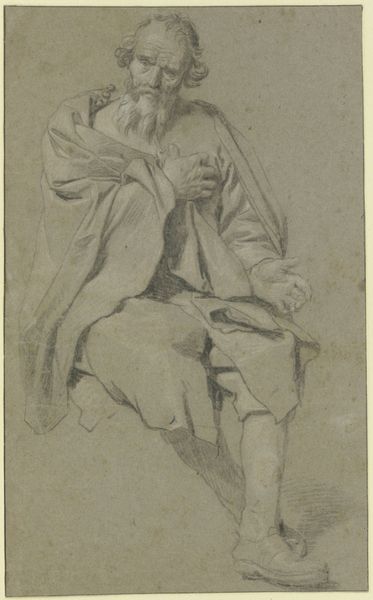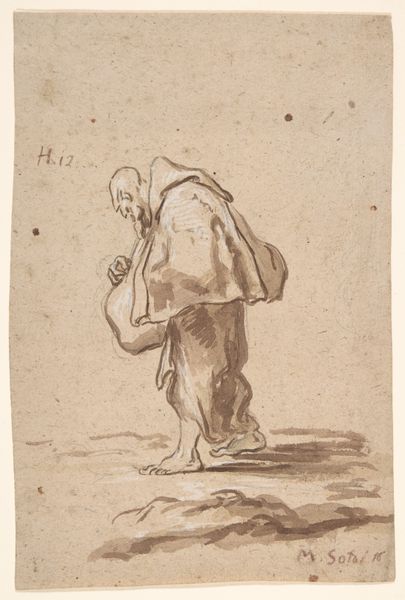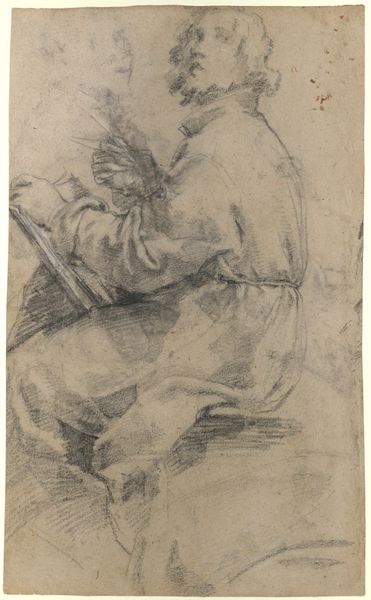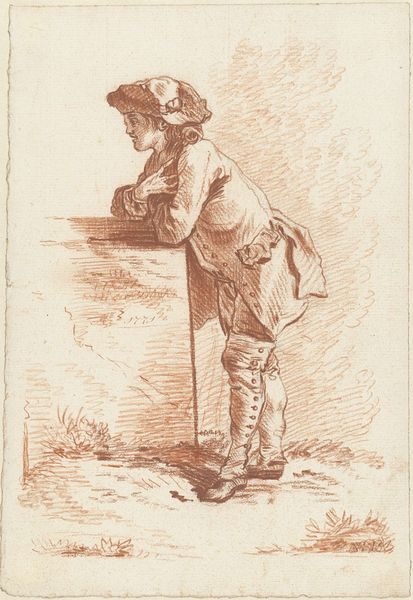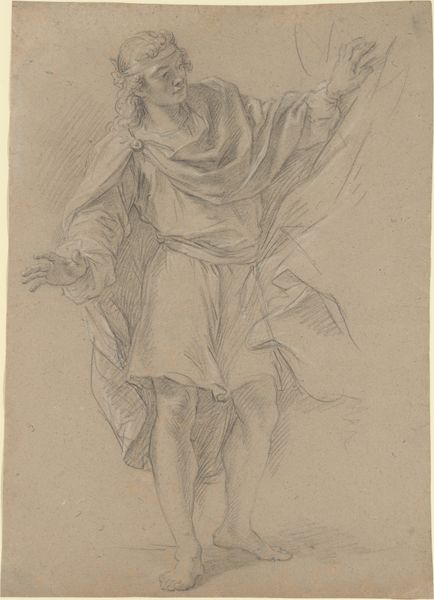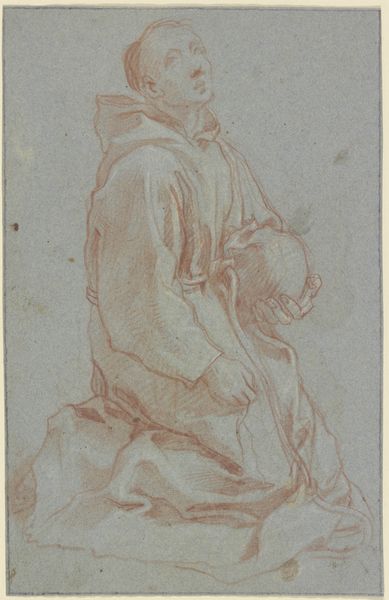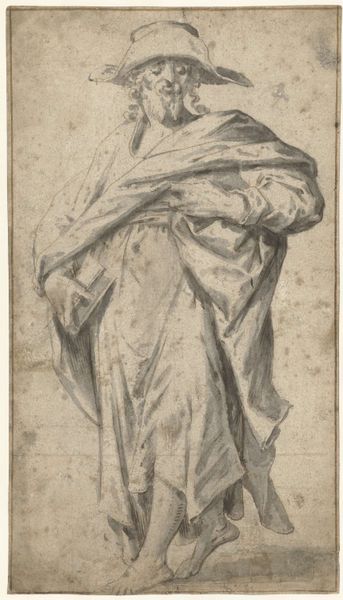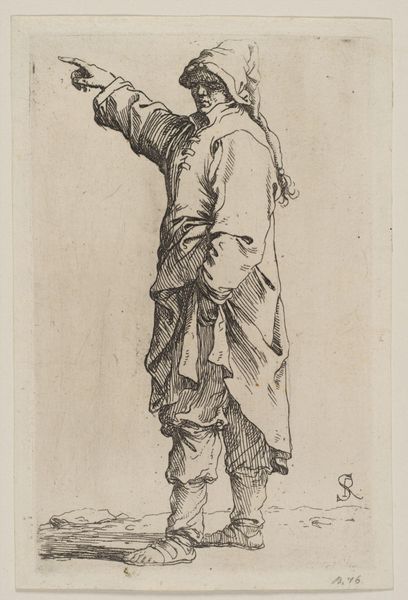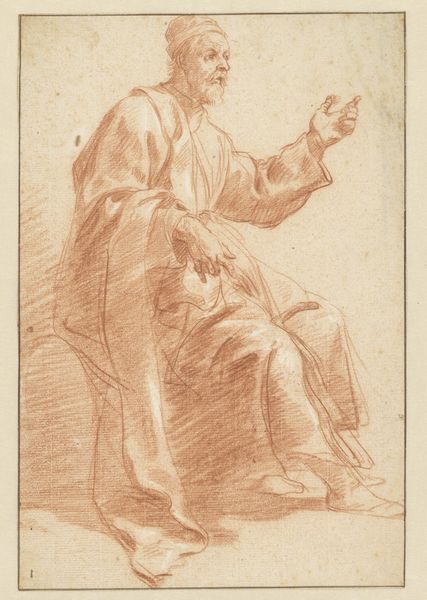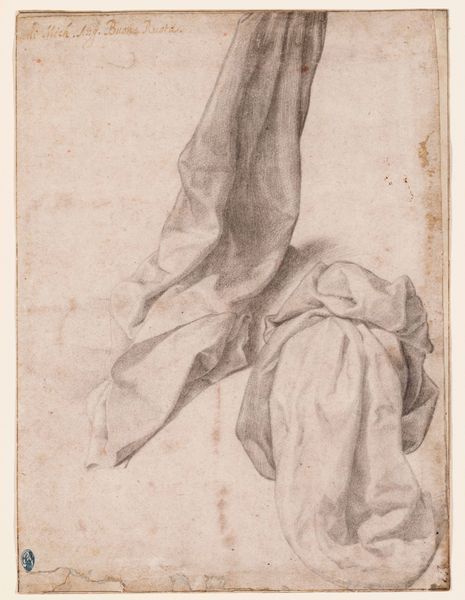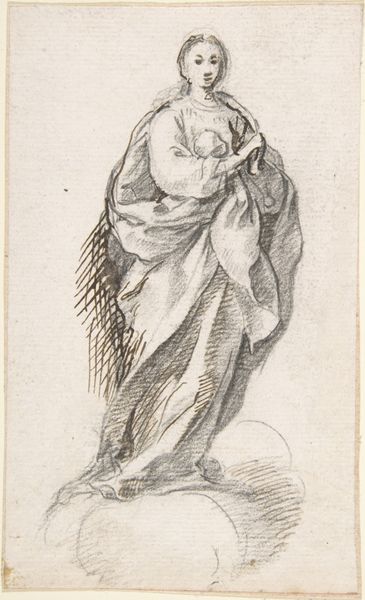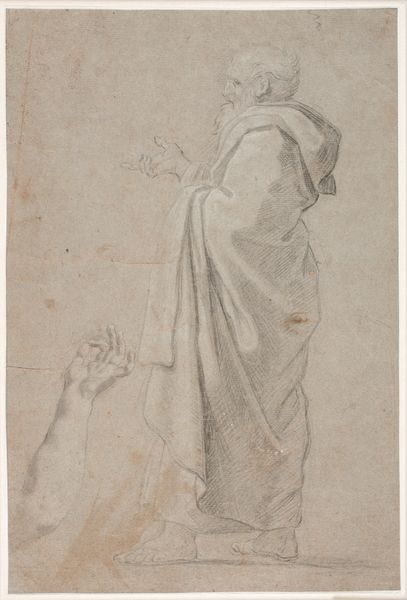
drawing
#
drawing
#
toned paper
#
light pencil work
#
pencil sketch
#
charcoal drawing
#
possibly oil pastel
#
charcoal art
#
pencil drawing
#
underpainting
#
watercolour illustration
#
italy
#
watercolor
Dimensions: 15 7/8 x 10 1/4 in. (40.32 x 26.04 cm)
Copyright: Public Domain
Curator: Here we have an intriguing sketch entitled "Standing Male Figure," attributed to Pietro Fancelli and dating from the 18th to 19th century. The work, a drawing, currently resides in the Minneapolis Institute of Art. Editor: Well, he certainly seems to be making a pronouncement! Or maybe he's hailing a cab... But seriously, there's a real dynamism in the figure's pose, a kind of restless energy, despite the limited palette. It's the charcoal that captures you right away. Curator: Indeed, the medium is significant. The use of pencil, possibly even a hint of oil pastel or watercolour illustration on what appears to be toned paper, allows for subtle gradations of light and shadow. Notice how the artist has utilized cross-hatching to define form and volume. It shows that we are seeing a human figure through art that could reference the divine form. Editor: Mmm, yes, that contrasting use of very definitive and subtle line work... like the artist couldn't decide what to fix and what to keep loose and airy. This figure strikes me as caught mid-thought, like a philosopher or orator, Italian, most likely. You can almost feel him working out an argument, right there on the page. Is he in contemplation or is this something less esoteric, perhaps even a moment captured mid-labor, gesturing with his right arm up toward an unknown thing? Curator: Given its creation in Italy in the 1700 or 1800s, the "grand tour" probably would have had its influences. His figure evokes classical sculpture, referencing the Italian High Renaissance and, particularly, an understanding of human anatomy. See how the underpainting guides the form and weight of the work. Editor: Yet there’s also an immediacy, a freshness, that belies its age. I imagine the artist sketching quickly, trying to capture a fleeting impression. He wants the "being there" energy over exact anatomical perfection. Curator: The interplay between precision and spontaneity, or rather structure, informs the overall aesthetic, doesn’t it? The dynamism results from the tension of those contrary qualities, I think. It shows the power of representational academic works when juxtaposed against moments that only the artist could "divine". Editor: Exactly! Well, I'm glad he made that hail, because the resulting artwork makes me think maybe inspiration really can arrive in an instant, if we’re ready. Curator: I appreciate you noting that this Italian charcoal rendering exemplifies art in flux through a moment of captured inspiration and application that begs questions of inspiration to us still today.
Comments
No comments
Be the first to comment and join the conversation on the ultimate creative platform.
